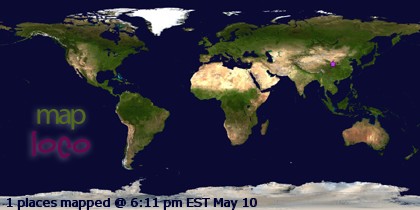Manali
Exhausted from 4 days of Indian Bus Hell, I settled gratefully into Appleview Manali, a Ladakhi guesthouse recommended to me by a friend from university. The hostel was set outside the modern town, in a lovely apple orchard owned by members of outlying villagers. I slept copiously, ate delicious homemade food cooked by the married couple who owned the guesthouse, and admired the view of the Himalayan foothills from all four corners of the guesthouse´s flat-topped roof. Occasionally, I ventured into town to explore a shrine to the goddess Kali, see a street magician perform, and watch the motley throng of soldiers, monks, wandering salesman, dirty-clothed backpackers, sleek-suited businessmen, old Ladakhi women in robes, and old Tibetan women in rainbow pinafores that converges on this town, which feels drawn from some ideal Tibetan Wild West.
The view from Appleview Manali

Some things are universal-- a street magician performs in Manali

After I was suitably recovered, I did something I had thought I might never want to do again: I got back on a bus. This was no ordinary journey, however. Our van convoy left Manali at 3 AM, traveling in a pack of 4 over the second-highest road in the world, traversing the Himalayas, and arriving in Leh, the capital of the semi-autonomous Ladakh province of India 22 hours later. In the course of the trip we waited patiently as we were engulfed by herds of goats on narrow mountain roads, stopped for chai and instant noodles in yurts on windswept plains, held our breaths as blood pounded in our heads in high passes piled with snow, and broke down twice. The landscape outside my window looked more to me like the moon than anything on earth.
A sampling of the most stunning pictures from my 22 hours of my trip


This is where we broke down

Leh
*My Indian visa was set to run out much earlier than I preferred, so I only had a few days in which to pack all the beauty of Ladakh, an ancient civilization on par with Tibet (that has in fact been at war with Tibetans on and off for millenia.) I wandered the winding, beautiful streets of Leh´s old town; explored the ruined castle that lies in the dry mountains above the city; stumbled on a traditional Ladakhi archery festival.
One day I took a car trip over an enormous mountain pass to Pangong Lake, which lies 1/3 in India and 2/3 in Tibet, a stunning drop of blue in thousands of empty miles of forbidding desert and mountains. Another day I went horseback riding through the stony plains outside of town, then hiked my way through the 2 most famous Buddhist monasteries, Thiksey and Shay, which slope up mountains to amazing views at their topmost points.
In the end my time in Ladakh presented only a taste of a world I had also glimpsed in Zhongdian during my travels in China. I found this universe, culturally, geographically and politically different than any I knew, to be fascinating, much like the frustrating, amazing, gorgeous world I had also discovered further south. Some travelers I've met refer to I.N.D.I.A, as in "I'm Never Doing It Again." But I know I have only had a taste and that I want to return for a deeper experience.
The view from my guesthouse

Ladakhi archery

Downtown Leh, with the ancient palace in the background

Yours truly, on the way to Pangong Lake (the sign says "Border Roads Organization Himank Welcomes On World Third Highest Pass, Chang La)
 Pangong lake, one the most beautiful places I will ever go
Pangong lake, one the most beautiful places I will ever go
 Monks in class at Thiksey monastery
Monks in class at Thiksey monastery A stunning 3-story Buddha at Thiksey. He's sitting on the floor below.
A stunning 3-story Buddha at Thiksey. He's sitting on the floor below. Thiksey
Thiksey
Agra
*Of course, no trip to India is complete without a visit to the country´s international icon (or at least, so I felt.) So during my few days back in Delhi I boarded an early morning train and visited Agra. The city was dirty, but interesting, with a fascinating market quarter. The Red Fort palace complex was beautiful, even as I melted in heat that reached 48 degrees Celsius (almost 120 F!) My experience at the Taj Mahal was frustrating-- the list of items you cannot bring in include flashlights, iPods, books that are not guidebooks, any kind of food, and I had all of these things in my bag. Once I had resolved the matter of where to keep my bag, the enclosure itself was mobbed with people (I found out later it was the run up to an important festival.) But even debilitating heat, beauracracy, and crowds couldn´t dim the beauty of this building. As I remarked to Faith, and later to other friends around the world, the capacity of the human race to find infinite ways to make architectural beauty continues to stagger me. And stagger I did, back to the train, on to Delhi, and toward the international airport, where a 5 am flight awaited to take me to a cultural universe far, far from the Himalayas. I was bound for a month in the Middle East.
48 degrees!(!!!)







































